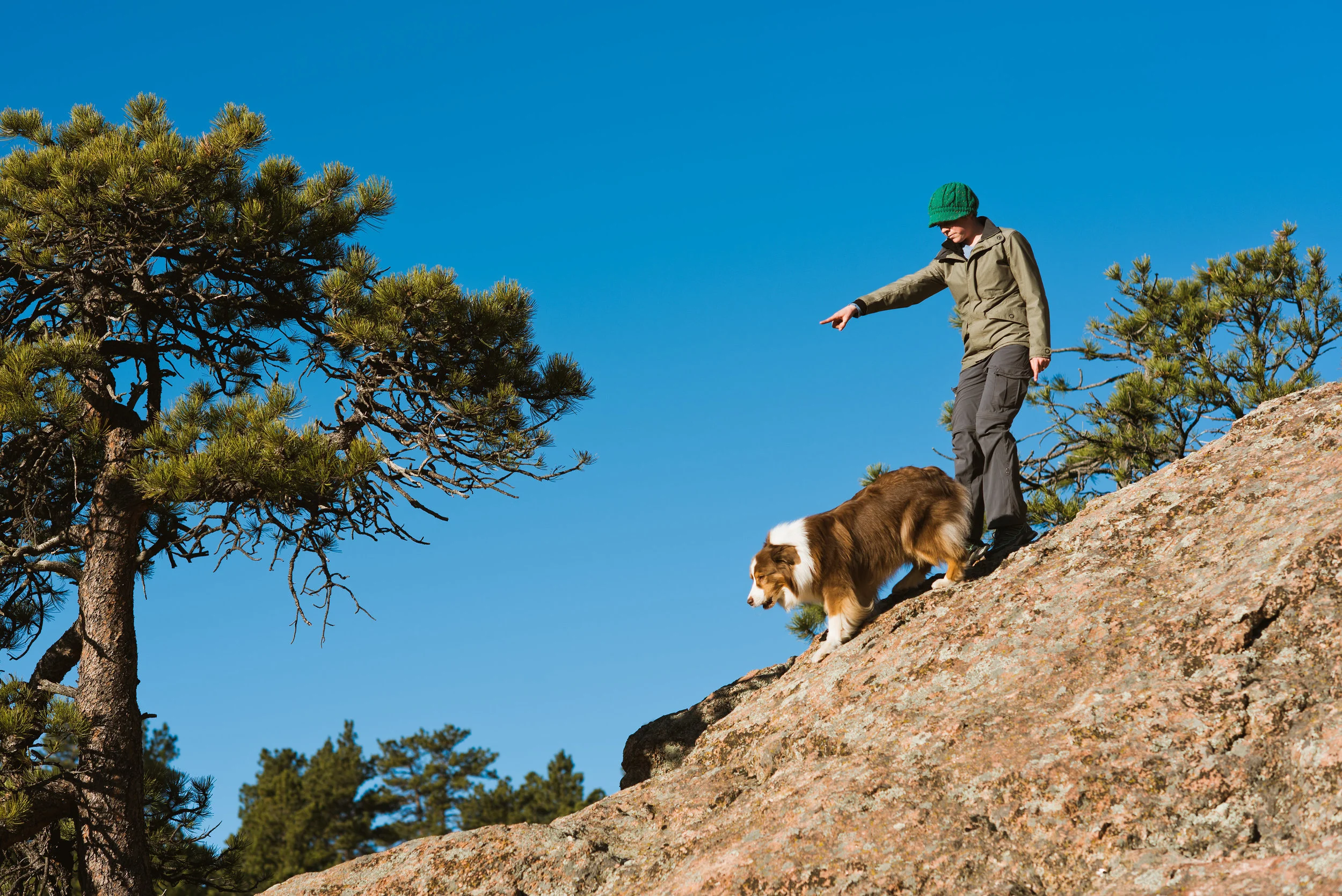Do you want to have fantastic hiking adventures with your dog, but you don’t know where to start? Getting out in the wild can be challenging enough without an over-enthusiastic dog contributing to the stress. In case you missed our “Hiking With Your Dog 101” seminar last night at Kriser’s Natural Pet, let’s review the list of foundation skills that are essential for enjoyment and safety out on the trail:
Essential Skills for Hiking Success:
• Recall
• Sit
• Stay
• Hand Target
• Give Attention to You
• Leave It
• Follow Your Directional Cues
Here is Roo responding to my directional cue to advance down the rocks ahead of me.
Now, before you grab your dog and your leash and head to the mountains to start running through this list with your dog, let’s start a little more simply. Practice each of these individually (5 minutes at a time, with breaks) at home, in your own backyard, first. Just like you learned to ride a bike in your driveway and not out on the highway where there are higher stakes, your dog should learn new skills (or brush up on rusty skills) at home first and then take it out to the more challenging environment. Start small and reward your dog when they respond correctly to your cues. Be positive – when you are out on the trail, you want your dog to LOVE coming back to you instead of chasing the wildlife. So be happy, positive, and encouraging at home too.
When you think your dog is ready for a bigger challenge, you can head to the trail. But keep in mind that when you are adding more challenges to the environment (like the presence of animal scat and other hikers with or without dogs) you should plan to reduce your criteria a little bit and work back up to the goal behavior. For example, even if your dog can do a 3-minute sit stay inside the house, perhaps start with a 15-30 second sit stay while other hikers are passing by, with enough distance to help your dog be successful and make good decisions. And be ready to reward BIG for great responses!
These training foundations are just one aspect of preparing for happy, safe hikes with your dog. Don’t forget about conditioning & stretching, pet first aid, proper equipment, and trail etiquette; these are all components that make the trail a pleasant place for everyone involved. Look for future blog posts on each of these topics, or contact us to get one-on-one help with preparing you and your dog to hit the trail together!














